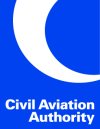CAA Proposes Incremental Expansion of Mode S in UK Airspace

Proposals to expand further the use of Mode S on aircraft operating in UK airspace have been published for consultation by the Civil Aviation Authority (CAA).
Phase One of the CAAs implementation of Mode S comes into force on 31 March, when the use of Mode S technology will be required within all UK airspace where transponders are mandatory.
Phase Two, covering the further expansion of Mode S, is being consulted upon now. As levels of air traffic continue to grow, the proposals will further improve the interoperability of aircraft with air traffic control radar and collision avoidance safety systems, helping to decrease collision risks and enhance air traffic control efficiency.
To meet the concerns of the General Aviation community about the cost and technical challenges of the wider use of Mode S the CAA recognises that there needs to be a phased introduction. The Phase Two proposals do not require that all aircraft should carry Mode S transponders in all UK airspace but concentrate on four priority options that the CAA considers should be adopted in the UK:
They are:
Mandate the carriage and operation of Mode S Transponders on all aircraft operating within controlled airspace. The aim is to create an environment where the position and altitude of all aircraft within controlled airspace is known to ATC and anti-collision safety systems.
2. Implement a formal process to support applications for Transponder Mandatory Zones (TMZs) outside controlled airspace. The CAA already has the regulatory authority to introduce these zones but, to date, this has been used only sparingly. However, it is considered likely that more TMZs will have to be established in future to address pressing risks, such as airspace infringements.
3. Include gliders in the SSR transponder carriage regulations. Gliders are not currently technically interoperable with ATC radars or SSR based anti-collision safety systems.
4. Mandate the carriage and operation of Mode S Transponders on all powered aircraft conducting international flights. The UK would need to adopt this requirement to comply with international standards.
These four options could be implemented, individually or in combination with each other, and any final recommendation to Government will depend on information and feedback from the consultation.
The proposed implementation date for these options is 31 March 2009 but operators of aircraft with existing Mode A/C transponders will have until 31 March 2012 to have them upgraded.
Greater electronic visibility of aircraft in controlled airspace will provide ATC with improved overall situational awareness which will enhance safety and air traffic management efficiency. It should also improve access to controlled airspace for all users because the initial identification of aircraft, and subsequent monitoring, will be conducted more expeditiously.
None of the proposals are specifically designed to accommodate an increase in the amount of commercial aircraft operating in Class G airspace and the measures are not linked to airspace charging or radio carriage. The CAA policies in these areas remain the same. Furthermore, GA aircraft that cannot equip with Mode S transponders by 31 March 2009 will not be grounded. However, aircraft that are not equipped with transponders may find it difficult to get ATC clearance to enter certain airspace.
CAA Director of Airspace Policy, John Arscott, said: The CAA is convinced that Mode S is the best way forward but wants an informed debate with the GA community to elicit the necessary information on the potential impact of these proposals.
We have not yet made our minds up on the eventual solution but have an overall aspiration to improve interoperability as a way of trying to protect freedom of movement for all airspace users, rather than segregating aircraft to maintain safety levels as airspace becomes busier.
The consultation closes on 31 May 2008.
The consultation document is available on the CAA website at: http://www.caa.co.uk/consultations


.jpg)



.png)


Comments
There are no comments yet for this item
Join the discussion